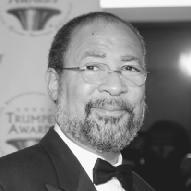 |
| Photo Courtesy of MyFlorida.com |
From humble beginnings Ms. Savage went on to study and work in New York and Paris—an impressive accomplishment for someone of her modest background. Through her work as a gifted sculptor she depicted the common man in society, although educating children and inspiring young artists was always foremost in her efforts.
Ms. Savage’s talent, combined with her leadership for civil rights and racial equality in the arts, brought her well-deserved recognition from her peers, though little material success during her lifetime. The City of Green Cove Springs has continued to honor the memory of this important artist with the opening of the Augusta Savage Cultural Arts Center."n.p.. MyFlorida.com. My Florida.com, n.p.Web . 28th Feb 2011."
"If I can inspire one of these youngsters to develop the talent I know they possess, then my monument will be in their work."
Augusta Savage was one of the luminaries of the Harlem Renaissance. She was the first black to gain acceptance in the National Association of Painters and Sculptors. She espoused social and political causes and brought about the realization of many opportunities for black artists and the Harlem community at large. She was adored in the Harlem community both as a talented artist and dedicated teacher.
Contrary to her father's wishes, Augusta Savage started modelling clay figures at an early age. As a preacher, he interpreted the concept of graven images literally. When the family moved to West Palm Beach, Savage's love for sculpting intensified, as she was inspired by winning a prize for one of her pieces at a county fair. She decided to become a professional sculptor and moved to Jacksonville. With no opportunities for training and employment in the South she, like many other blacks at the time, migrated north.
In New York, she enrolled in a free art program at Cooper Union while taking in washing to make ends meet. Subsequently, she was selected to participate in a summer program in France but was denied by the French government because of her race. Savage publicized the incident and while the decision was not reversed, she did receive an offer to study with a leading sculptor, Herman Atkins MacNeil.
Savage became recognized as a portrait sculptor and sculpted busts of leading black figures including W.E.B. DuBois and Marcus Garvey. But it was the sculpture of her nephew entitled Gamin that highlighted her unique perception of the black physiognomy. As a prime example of the black aesthetic, Gamin provided Savage with the chance to study in Paris for a year through a Julius Rosenwald Fellowship.
Upon her return to Harlem, she founded the Savage Studio of Arts and Crafts with the objective of providing art education within the community. She selflessly ignored her own work to mentor gifted children. Subsequently, she was appointed director of the Harlem Community Arts Center, an institution founded by the Works Progress Administration (WPA). From this position, she highlighted racial bias in the hiring practices of the WPA. She successfully gained the inclusion of black artists in WPA projects, with the outcome being the establishment of the Harlem Artists Guild. She influenced a number of future famous artists, including Jacob Lawrence.
She was commissioned by the Fair Corporation to produce a statue for the 1939 New York World's Fair and created one of her major works, The Harp, based on J. Weldon Johnson's Lift Every Voice and Sing. Unfortunately, it was destroyed after the World's Fair. Most of Ms. Savage's works are not available as they were never cast in durable materials and were either lost or destroyed.
In the 1940's, Ms. Savage left Harlem and opened a studio in Saugerties, N.Y. where she continued to teach sculpting to adults and children.
Augusta Savage died on March 26, 1962. "n.d. Black History Pages. BlackHistroypages.net, n.p. Web. 28 Feb 2011"
Links:
Black History Pages






